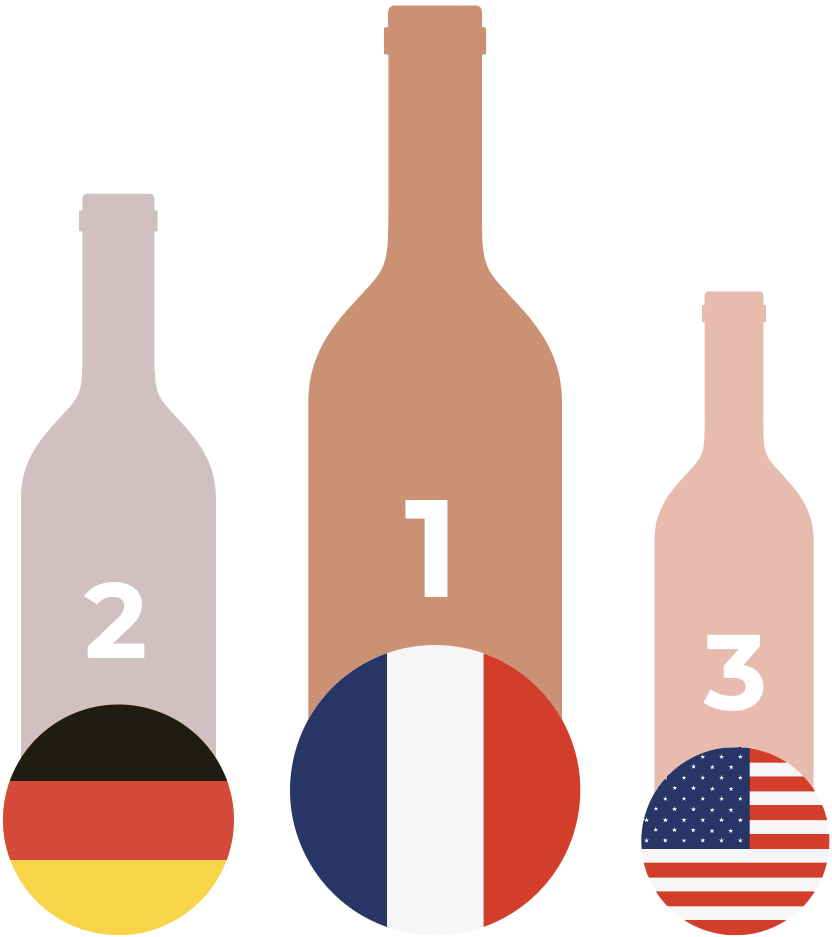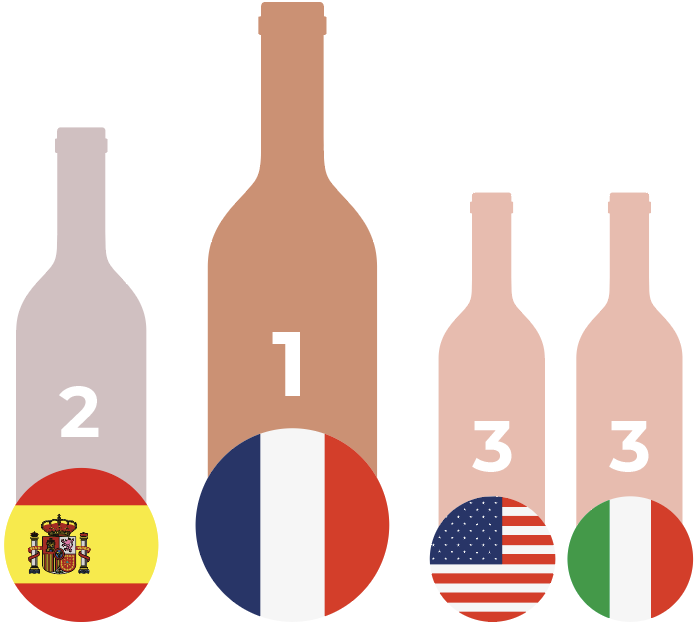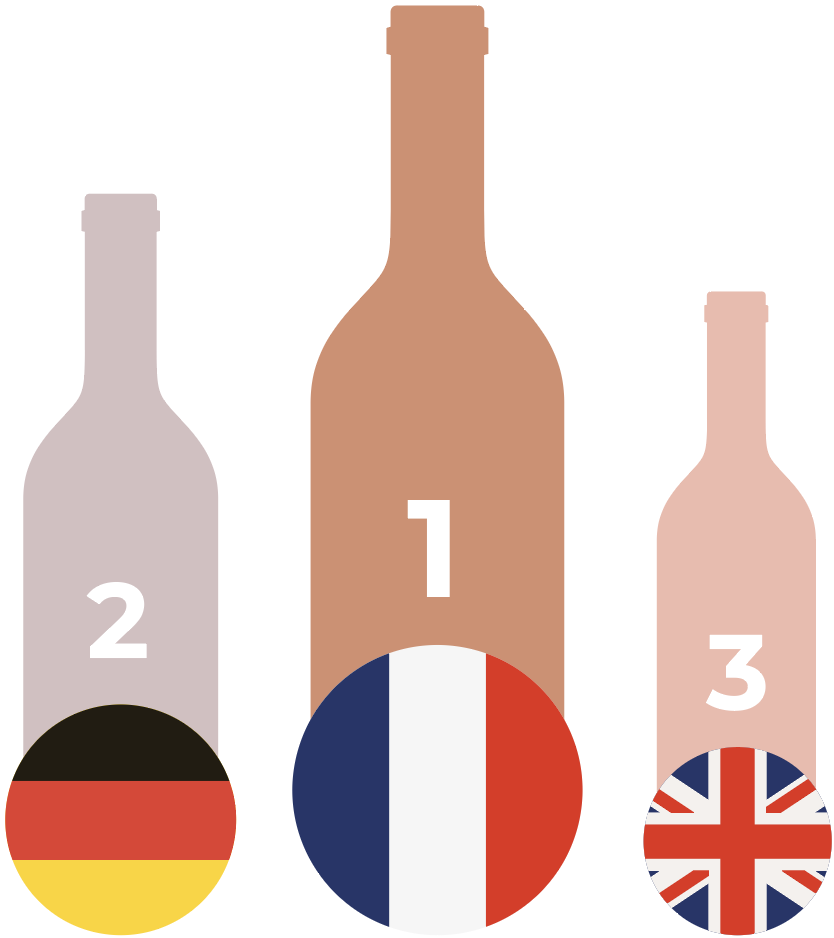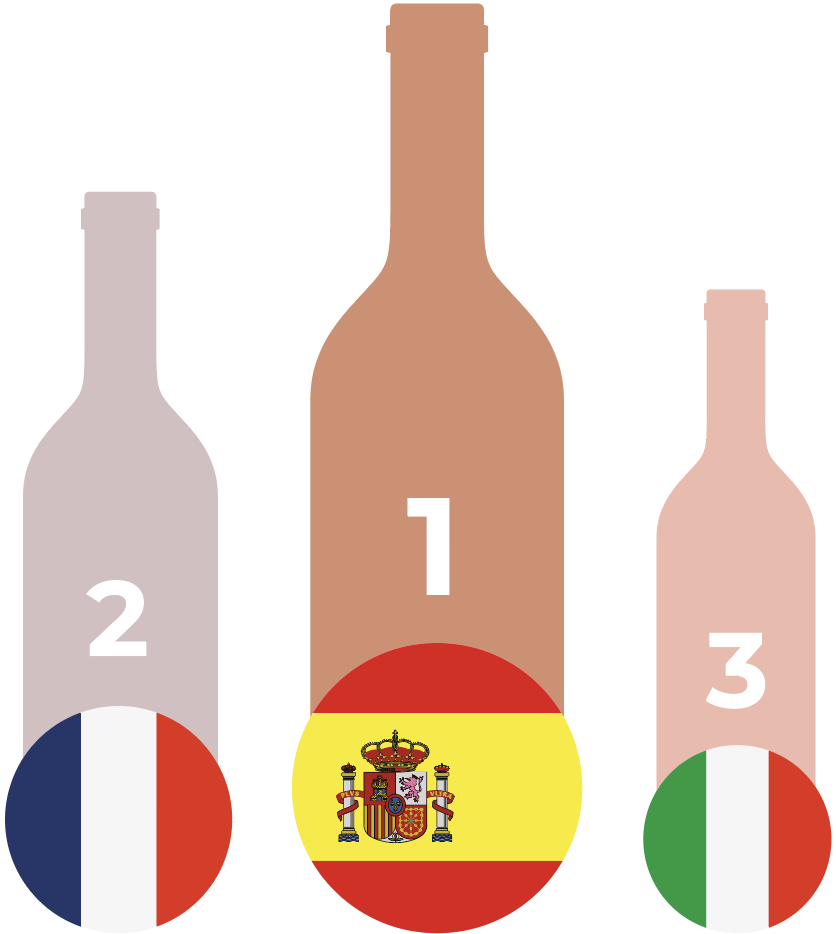Rose Wines World Tracking
Publication Key Figures 2022
Global consumption of rosé wine seems to have stabilized in 2022. While rosé wine production has slipped again, international flows are enjoying stability and upgraded status.
After a downward phase between 2019 and 2021, rosé wine consumption stabilized in 2022 (at 19.6 million hectolitres, up 0.5 % over 2021). Rosé continued to gain market share. Although its consumption has stabilized, the total consumption of still wine continued to shrink (down 2.6 % in 2022). Rosé wine now accounts for 10 % of global still wine consumption.
The main areas where rosé wine is consumed can be found primarily in Western Europe (16 countries) and the United States. That being said, the market share enjoyed by those two regions has declined: they were responsible for 83 % of global rosé consumption in 2012, compared to 80 % in 2021 and 78 % in 2022.
The growth areas continue to become more and more spread out. Several pre-existing trends have been confirmed, namely:
- A drop in rosé wine consumption in mature, high-volume markets (like France, the United States and Italy)
- In parallel, small to mid-sized growth areas remain (particularly Central and Eastern Europe, Denmark, Oceania and Brazil)
- A return to growth in certain markets in 2022 (like Canada, Spain, Greece, Portugal and South Africa)
Global rosé production shifted downwards again, to 21.8 million hectolitres in 2021 (-5.3 %). That decrease was mainly due to France (-1.6 million hectolitres in 2021), although it continues to dominate global production alongside Spain, Italy and the United States:
- Those four countries alone accounted for 71 % of global rosé wine production
- In parallel, several areas made positive progress: in the Southern Hemisphere (Chile and New Zealand), Eastern Europe (Hungary, Romania and Bulgaria) and Canada.
In 2022, global trade flows were relatively stable. About half of all rosés cross at least one national border before being consumed. Global exports held steady at 10.9 million hectolitres in 2022. Spain is still the top exporter (38 % by volume), ahead of France (18 % by volume).
Exported rosés are becoming more high-end. Global export sales (export prices) rose to €2.4 billion (up €0.3 billion compared to 2021). By value, the leadership position of French rosés was strengthened, with high average prices enjoying an upward trend.
In spite of a fall in production (most likely due to cyclical circumstances) and domestic consumption (a structural decline), France remains a key leader in the world of rosé wine, as the no. 1 producer, no. 1 consumer, no. 1 exporter by value (no. 2 behind Spain by volume) and no. 1 importer by volume (primarily from Spain).
Source : The IWSR
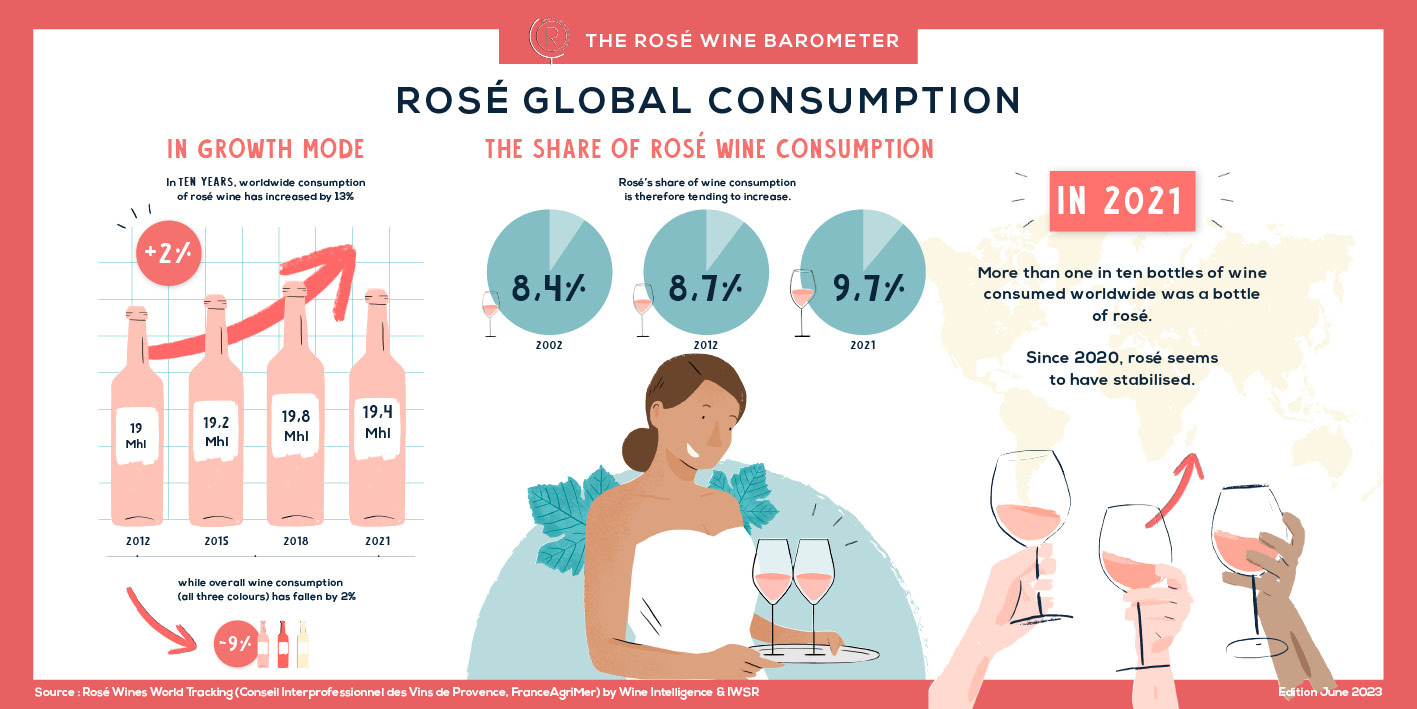
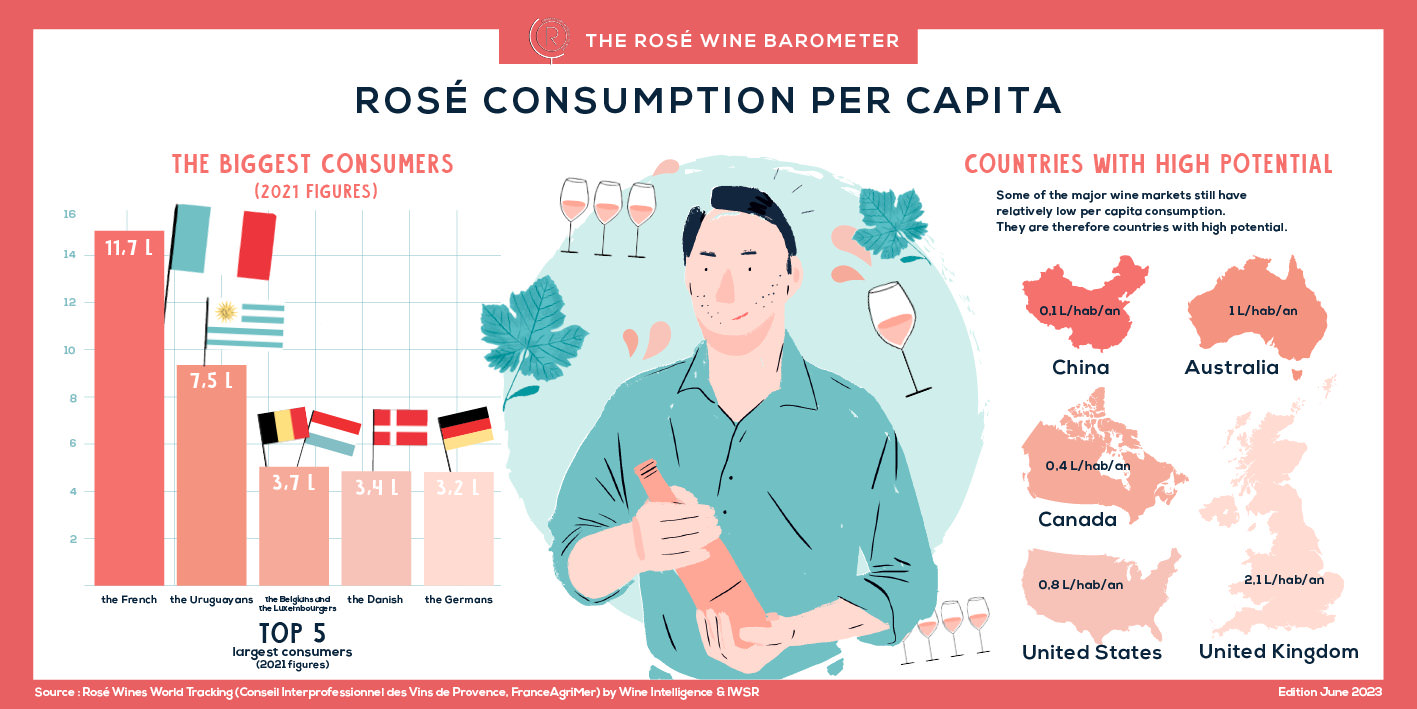
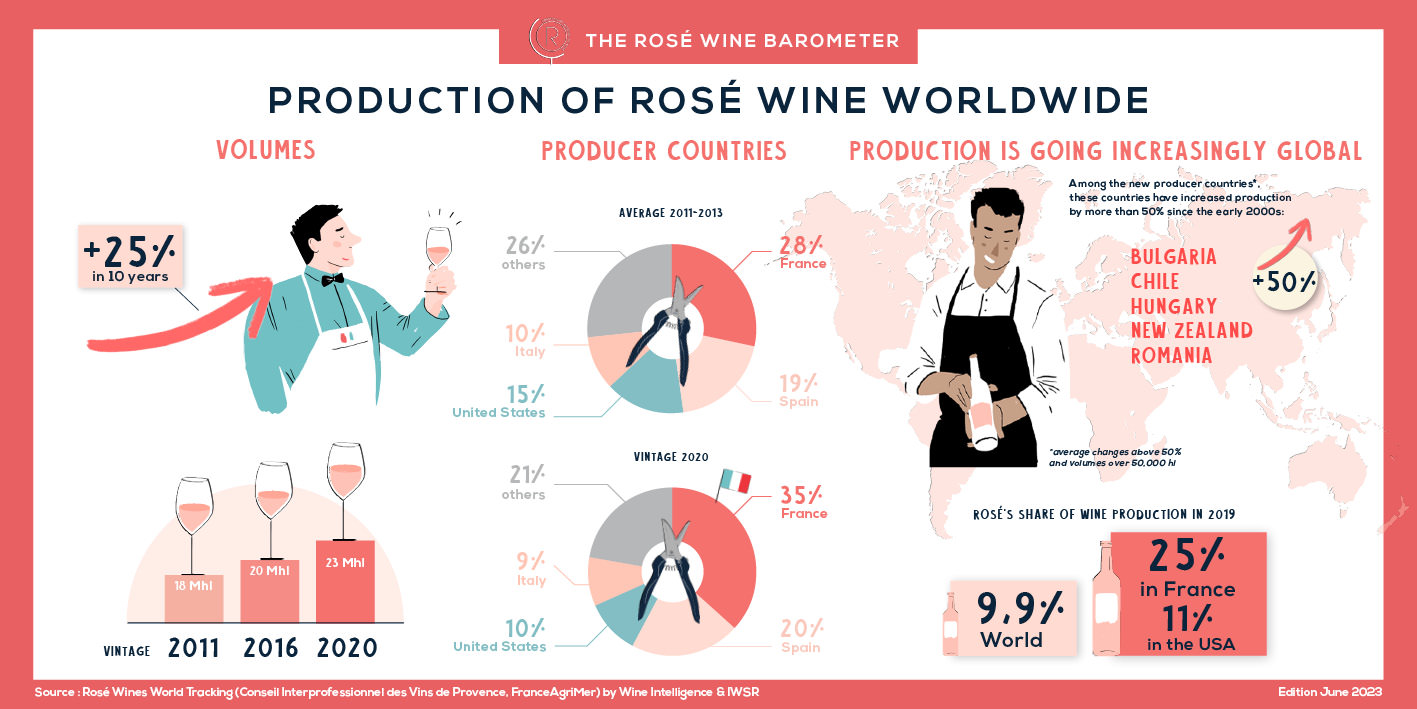
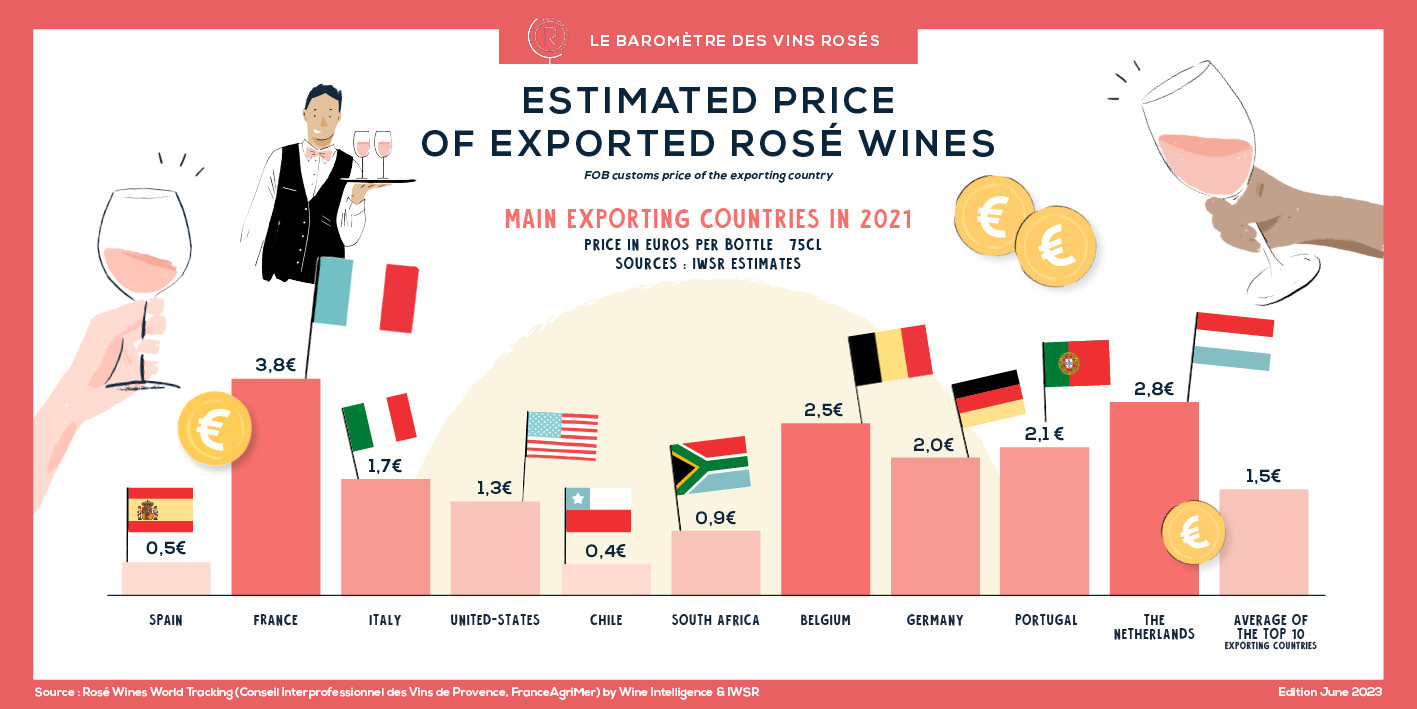
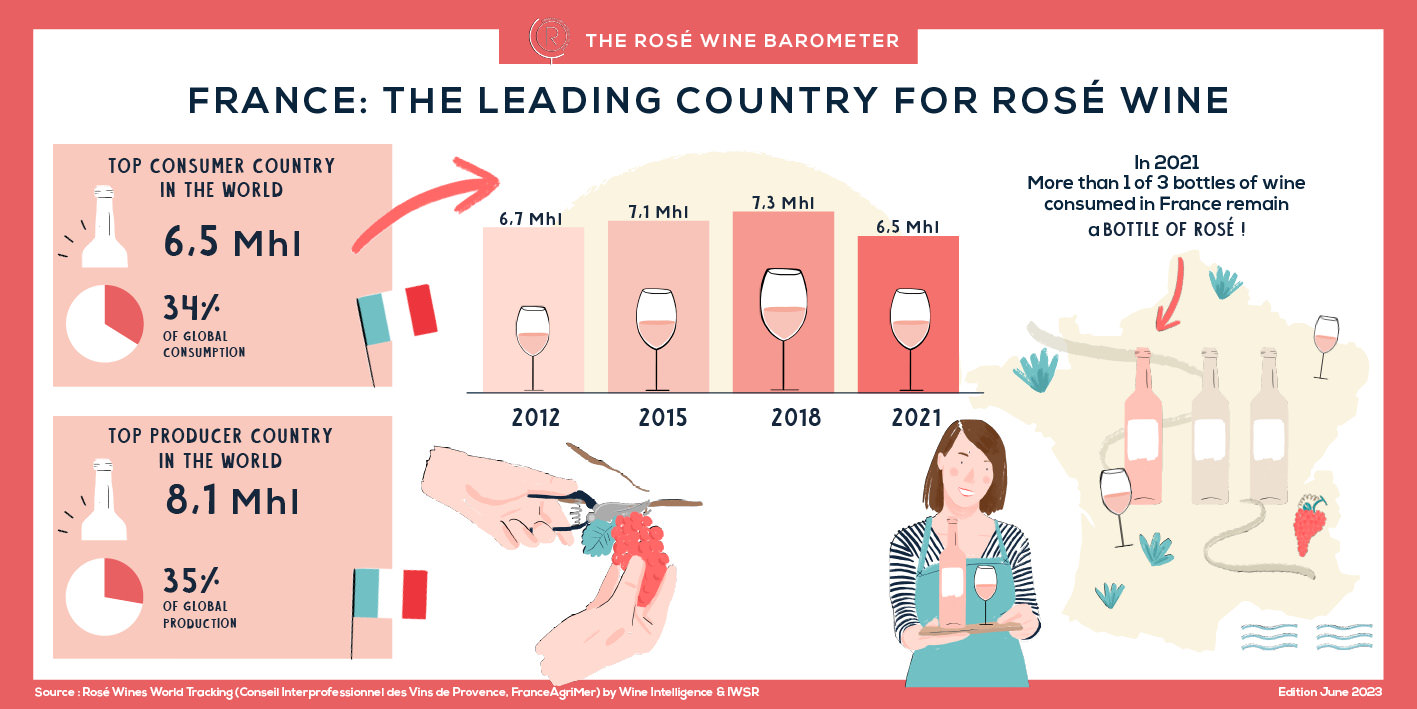
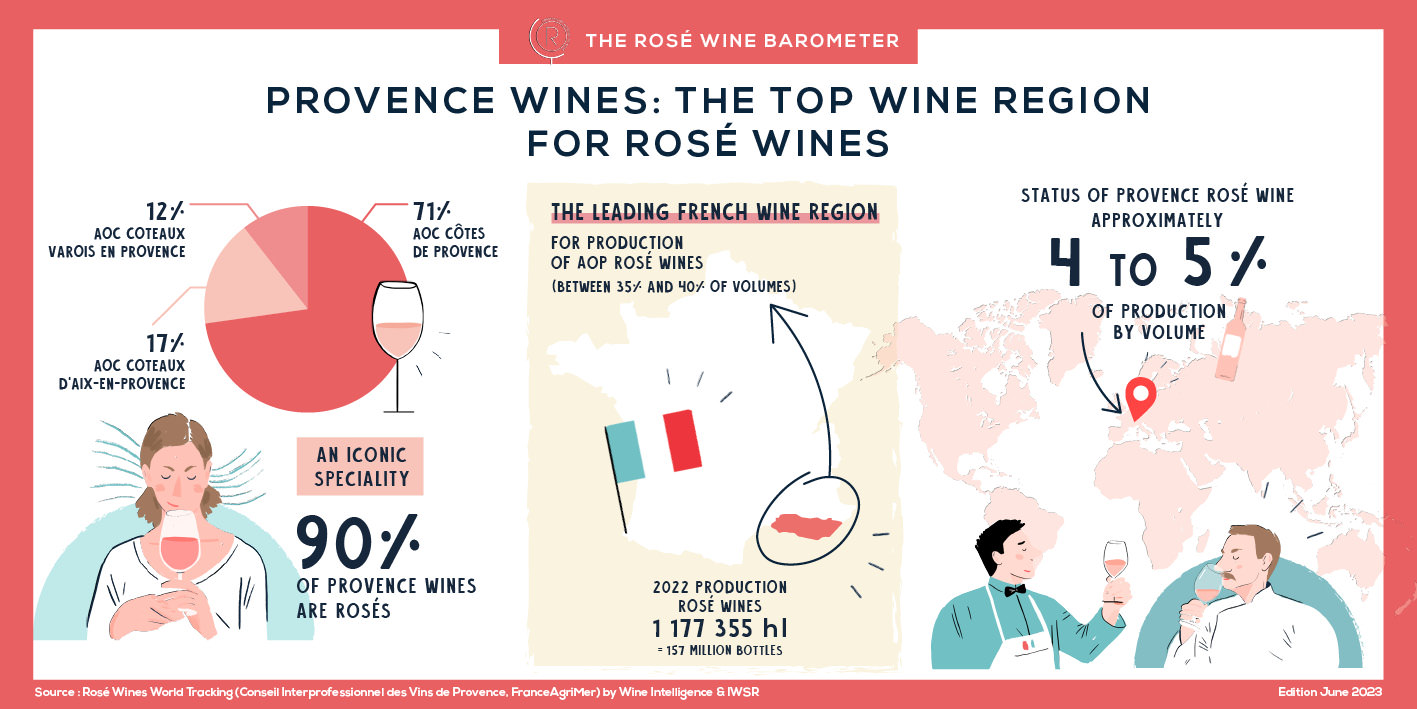
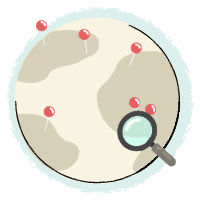 45 countries studied
45 countries studied Approximately 20 experts consulted to gain insight into the latest market trends
Approximately 20 experts consulted to gain insight into the latest market trends
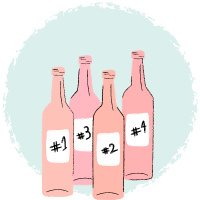 Use of numerous consumer panels
Use of numerous consumer panels
 Tracking since 2002, throwing up long-term trends
Tracking since 2002, throwing up long-term trends
 A unique tool recognized by industry members
A unique tool recognized by industry members
